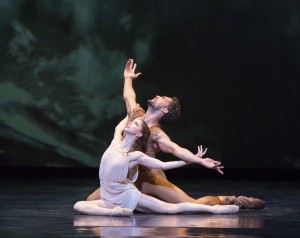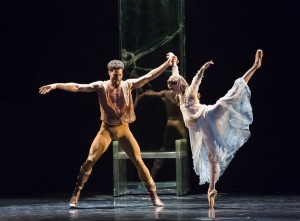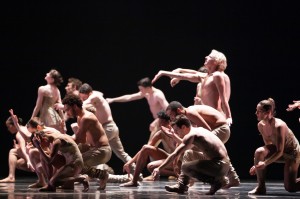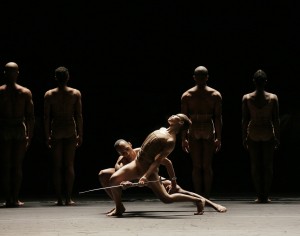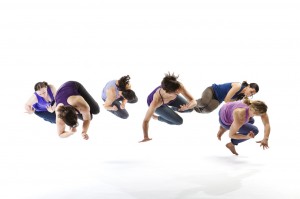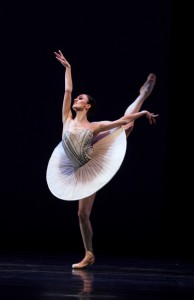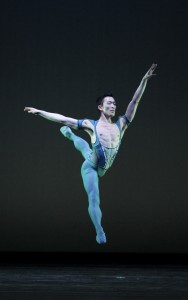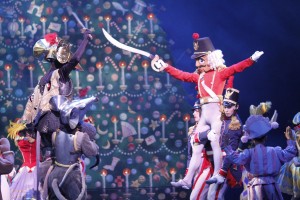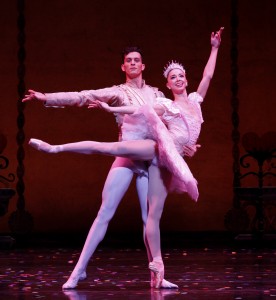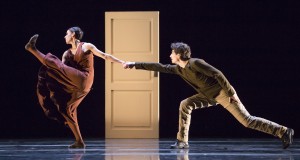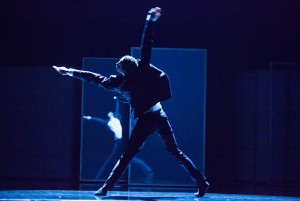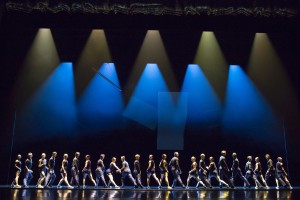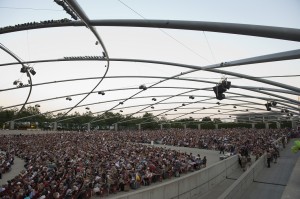O, beware, my lord, of jealousy!
It is the green-eyed monster which doth mock
The meat it feeds on.
Othello: Act III, scene iii
Nobody does drama like Shakespeare. The Bard, who had a birthday this week, adapted the story Othello from a 1566 work by Geraldo Cintio and in turn, Lar Lubovitch, who just turned 70, adapted the tale into movement for the dance stage. Add in an original, chilling score by Oscar-winning composer Elliot Goldenthal and the incomparable opening night cast of Joffrey Ballet principals and you have something extraordinary. Last night, Othello: A Dance In Three Acts, the story, the choreography, the music and the cast all came together in a perfect spiral of love, deceit, beauty, betrayal and death. Joffrey performed this ballet in 2009 to great reviews, but the second time around is even better.
The story. Although Lubovitch doesn’t directly follow Cintio or Shakespeare’s versions, the essence of the story is embedded in his movement. Ballet steps get a contemporary twist with a flexed foot, bent arm or parallel leg. Corps scenes take an ominous edge with twitchy, staccato moves. Each principal’s character is revealed in everything they do. The simple turn of a head or placement of a hand relates the intention in a second. The dancers don’t have to act for the story to be told, yet this cast acted their roles to perfection.
The choreography. For me, Lubovitch’s genius lies in the intuitiveness of his partnering. Sweeping, circular lifts with unexpected holds float to the floor and back up again with amazing fluidity. The strength required for most of his partnering is immense, yet the dancers never look taxed.
The music. Dark and dangerous like the plot, this music isn’t your typical ballet score. Loud timpani drums, saxophone, and oboe punctuate the lighter notes of the marriage pas de deux. Iago’s sharp, thrashing solo is all but dictated by the angry horn section’s shouts. The Act II tarantella speeds to its conclusion carrying the storyline along with its pace. A few Psycho-esque moments let us in a fracturing mind that’s ready to kill. The difficult score was beautifully played by the Chicago Philharmonic Orchestra led by Scott Speck.
The cast. This cast. The originals. Bravo for bringing back the five original principal dancers. Fabrice Calmels (Othello), April Daly (Desdemona), Matthew Adamczyk (Iago), Valerie Robin (Emilia), and Aaron Rogers (Cassio) were completely committed to their characters as if letting them simmer and age for four years made them exquisitely ripe. Calmels was strong, fierce and frightening, cutting an imposing, yet ultimately fragile figure on the stage, his solos impassioned and impressive. Daly made an impression with her first solo (the “Look, he gave me a hankie!” dance) with her bourrees as fast and light as butterflies and beveled extensions to the skies. The two together created something magical with her tiny, delicate, light frame next to his tall, chiseled and dark body. I really can’t say enough about how beautifully these two dance together. Adamczyk personified evil, lurking on the edges spider-like, then creeping in to weave his tragic web with one raised eyebrow revealing the murderous thought in his head. Robin, a seriously strong dancer, played the battered wife role with aplomb. You have to be that strong to be thrown around like that and make it look easy. Rogers, always delightful, brought his precise technique and ballon to his wrong-place-at-the-wrong-time role. Stacia Holden stood out as the sassy Bianca and special shout outs to Mahallia Ward, Amber Neumann and Michael Smith for their extra reckless abandon in the tarantella.
Cast, composer, conductor and choreographer were all on stage for the ovations and applause, recognition for a job more than well done. This is your last chance to see Lubovitch’s Othello, as it is being retired from Joffrey’s active rep. There are nine performances left. You should get your tickets NOW.
Joffrey Ballet presents Lar Lubovitch’s Othello at the Auditorium Theatre, 50 E. Congress Pkwy. through Sunday, May 5. Performance times vary. Tickets are $31-$152; call 800.982.2787 or visit joffrey.org.othello.

